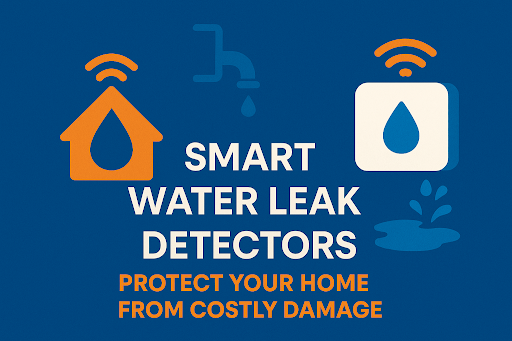Whether you are an experienced electrician or simply someone who does not know much about electrical systems in residential buildings, chances are you have heard of wires. A wire is responsible for carrying electrical current from the power source to every appliance that requires electricity in a house.
It is one of the basic things you should familiarize yourself with if you want to learn about the electrical system in your house. In this article, we will go over the basic things you need to know about wires and also the most commonly used types of wires in residential buildings. Let’s dive in!
What Happens in a Wire?
When it comes to electrical systems, one term you will often come across is “circuit.” An electrical circuit is essentially a network formed by various components working together. In a closed-loop circuit, the electric current travels from the power source (like a battery) through conductive materials (such as wires and cables), powers the load (like a light bulb) and then makes its way back to the source. It is a complete cycle that allows electricity to flow and do its job.
Now let’s go a little deeper. Electricity is the flow of electrons, and when connected to a power source like a battery, electrons start moving through a wire, creating an electric current. The wire acts as a pathway for the electrons to travel from one place to another, allowing the flow of electricity. The current that flows through a wire is measured in amps; the amps indicate how powerful the wire is for carrying the electric current.
The amount of current (I) flowing through a wire depends on the voltage (V) applied to it and the resistance (R) it possesses. This is called Ohm’s law. Ohm’s law can be expressed as I = V/R
This understanding is vital in designing and troubleshooting electrical systems and ensuring their safe and efficient operation.
Wire Vs. Cable
Let’s start by explaining the difference between a wire and a cable. Wires are like conductors that carry electricity. In our homes, we usually use copper or aluminum wires, although aluminum is not so common anymore. These wires can either be stranded (made of smaller strands) or solid (one solid piece) and are covered with a non-conductive plastic coating (see Figure 1).
Figure 1
On the other hand, a cable consists of a group of wires all bundled up in a single sheathing. (see Figure 2)
Figure 2
In modern homes, most cables include three wires:
- A hot wire for carrying current from the power source to the device or appliance,
- A neutral wire that carries current back to the power source, and
- A ground wire that provides a path for excess electrical current to safely dissipate into the ground.
Figure 3
Wire Sizes
Electrical wire sizes are determined by a unit called “gauge”. The most common gauges used in homes are 10, 12, or 14. Remember, the gauge and diameter have an inverse relationship. As the gauge number goes up, the wire diameter goes down. For instance, a 10-gauge wire is thicker than a 12-gauge wire. Larger wires can handle more amperage and wattage compared to smaller wires. (see Figure 4)
Figure 4
Color Codes
One question that comes to mind is how do we distinguish between wires. An easy way to do this is by looking at their colors. The color of a wire provides valuable information about its purpose. Here is a breakdown of wire colors and their corresponding functions:
- White insulation: Typically considered neutral, but in certain situations, it may serve as a hot lead. In some cases, white wires in existing wiring may be marked with black or red to indicate their conversion to hot wires.
- Green insulation and bare copper: These wires are designated as ground wires.
- Black insulation: This color signifies a hot wire commonly used for switches and outlets.
- Red insulation: Red wires are used as hot wires for switch legs¹ and hardwired smoke detectors.
- Blue/Yellow insulation: These colors indicate hot wires that are pulled through a conduit².
Although this color guide can be very useful, we highly recommend always using a volt checker to differentiate between wires. Let’s stay on the safe side.
¹A switch leg is the wiring that connects a switch to a light or outlet, allowing the switch to control the flow of electricity to the device.
²A conduit is a tube for protecting electrical wiring.
Cable Labeling
When it comes to cables, we are talking about a group of wires in a single sheathing. How would we know how many and what kind of wires are in the cable? The information you need is conveniently printed on the cable’s covering. Here’s what to look for:
- Type: This tells you the specific type of cable, such as NM-B or UF, which indicates its purpose.
- Gauge: The gauge refers to the thickness of the individual wires inside the cable. It is represented by numbers such as 14, 12, 10, and so on.
- Number of wires: The number of wires in the cable is specified after the gauge. For instance, 14/2 means there are two 14-gauge wires within the cable (excluding the ground wire, if present).
- Grounding: If the cable includes a ground wire, it will be indicated by the word “GROUND” or the letter “G.”
- Voltage rating: This number shows the maximum voltage the cable can safely handle.
- UL: The presence of the “UL” label signifies that the cable has undergone safety certification and approval by Underwriters Laboratories.
Now that you know the basics about electrical wires let’s jump into the most common types of wires being used in residential buildings.
1. NM Cable
The most popular type of electrical wire used in homes is called NM cable or Romex cable. Romex is a well-known brand. NM cables are made up of three or more wires bundled together in a flexible plastic sheathing (see Figure 5). They are commonly used for indoor wiring in dry areas and are used to supply power to appliances, fixtures, switches, and outlets. Nowadays, NM cables come in different colors to indicate the wire gauge. Here are the most common NM cables found in modern homes:
- 6-gauge, 55-amp circuits: black sheathing
- 8-gauge, 40-amp circuits: black sheathing
- 10-gauge, 30-amp circuits: orange sheathing
- 12-gauge, 20-amp circuits: yellow sheathing
- 14-gauge, 15-amp circuits: white sheathing
Figure 5
2. UF Cable
UF (Underground Feeder) cable is a special version of NM cable. It has insulated hot and neutral wires and also a bare ground wire. What sets UF cables apart from NM cables is that each wire has a solid plastic covering, and the whole cable is covered in a gray outer layer (see Figure 6). This design makes it perfect for wet areas and burying directly in the ground. Keep in mind that although this wire is waterproof it can not be submerged in water. So, whenever you need to run wires underground or work on outdoor projects, UF cable is the way to go.
Figure 6
3. THHN/THWN
THHN and THWN are single conductors each with its own insulation. There is a big difference between NM cables and these wires.As we explained earlier, NM cables have multiple wires that are bundled together in a single sheathing. However, THHN and THWN wires are protected by a tubular or plastic conduit, not a sheathing (see Figure 7).
Conduits are often used in unfinished areas like basements and garages, as well as for short exposed runs inside homes, such as wiring connections for garbage disposals and hot water heaters. The price of THHN and THWN wire is similar to NM wire, but you will have the added cost of the conduit, as it is sold separately.
The letters in THHN and THWN indicate specific properties of the wire insulation.
- “T” stands for thermoplastic,
- “H” means heat-resistant (with “HH” being highly heat-resistant),
- “W” is for wet locations, and
- “N” indicates nylon-coating for extra protection.
Figure 7
4. Low-Voltage
Standard wiring typically operates at 120 volts, but at times low-voltage wiring may be required. It is used for circuits that require less than 50 volts. This type of wiring is perfect for devices that do not need a lot of electricity, such as doorbells, thermostats, sprinkler systems, and landscape lighting.
Low-voltage wiring comes in different gauges, ranging from 12 to 22, and it may have insulation or cable sheathing for added protection. While low-voltage wires generally do not pose a risk of electric shock, it is always a good idea to turn off the electricity before working on any device connected to the wire, just to be safe.
Figure 8
5. Phone and Data
Telephone and data wiring are types of low-voltage wires used for landline phones and internet connections. They are typically made of copper and come in different configurations. Telephone cables can have four or eight wires, while Category 5 (Cat 5) cables, the most common type of household data wire, have eight wires organized in four pairs (see Figure 9). Cat 5 cables can be used for both phone and data transmission and offer better capacity and quality compared to standard phone wires. They are also more affordable than other household wiring options like NM or UF cables.
Figure 9
6. Armored
Armored wire typically consists of multiple conductors, an insulation layer, bedding, a protective outer armor layer, and sheathing (see Figure 10).
Figure 10
The extra armor layer could be made from metallic or non-metallic material and provides an extra layer of protection against physical damage. You can use this type of wiring in areas where NM cables are not permitted due to stricter rules. Also it can be used in outdoor areas where the cable may be exposed to harsh conditions. But remember not all armored wires are weather or chemical resistant. Therefore, make sure to choose the right type.
7. Coaxial
The last cable we want to discuss is the coaxial cable. It is a type of data wire that is becoming less commonly used. It has a round shape with a central copper conductor, surrounded by an insulating layer and a braided wire shield (see Figure 11). It is often used for satellite dishes and distributing television services within a home. Coaxial cable is safe to use and carries minimal voltage, so the risk of electric shock is low, as long as it is not in contact with other current sources.
Figure 11
Conclusion
As we wrap up this article, you have now become familiar with the common types of wire used in residential buildings. This knowledge will come in handy when you are doing electrical work in your own home. However, we want to emphasize the importance of safety when it comes to working with electricity. Electrical tasks can be extremely dangerous, so it is always wise to seek the assistance of a professional. By hiring experts, you can ensure the safety of yourself, your loved ones, and your home.
At Matrix Company Solutions Corp., we prioritize safety and are experts in electrical service replacement or repair. If you are in need of a renovation in Philadelphia, including electrical system work, do not hesitate to reach out to us. We will be more than happy to help!


![Philadelphia Sump Pump Installation Requirements [2025 Guide]](https://matrixgc.com/wp-content/uploads/2025/06/Philadelphia-Sump-Pump-Installation-Requirements-2025-Guide.png)





0 Comments